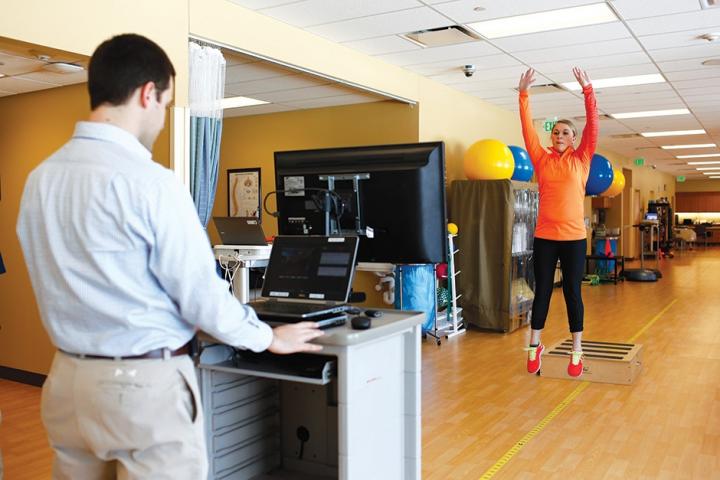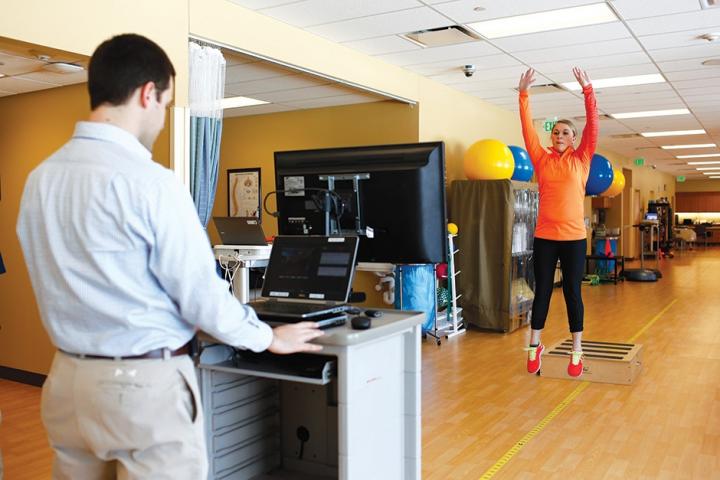
Credit: Photo by Rachel Coward
COLUMBIA, Mo. – Motion-based lab technology can help physical therapists, clinicians and athletic trainers analyze how we move–it also is very expensive. Some motion labs can cost upward of $100,000. Now, a team of University of Missouri researchers is finding that the depth camera often associated with video game systems can provide a variety of health care providers with objective information to improve patient care.
"In testing the system, we are seeing that it can provide reasonable measurement of hip and knee angles," said Trent Guess, associate professor of physical therapy and orthopaedics. "This means that for only a few hundred dollars, this technology may be able to provide clinics and physical therapists with sufficient information on the lower limbs to assess functional movement."
Guess and the team of researchers used the depth camera from a video game system to capture movement from participants doing drop vertical jumps and lateral leg raises. The participants' movements also were measured using traditional motion-capture technology that involved placing markers on their skin. Researchers found that the systems produced similar results.
The recent findings on how video game technology can improve physical therapy are a result of a multi-disciplinary collaboration at MU started by Aaron Gray, a sports medicine physician with MU Health Care. Gray was interested in how easily accessible technology could help athletes avoid knee injuries. He began working with a team of researchers to test the idea, including Guess; Marjorie Skubic, professor of electrical engineering and computer science; Brad Willis, assistant teaching professor of physical therapy; and David Echelmeyer, physical therapist with the Missouri Orthopaedic Institute; and Seth Sherman, associate professor of orthopaedics.
"Assessment of movement is essential to evaluating injury risk, rehabilitative outcomes and sport performance," Gray said. "Our research team is working to bring motion analysis testing–which is expensive and time consuming–into orthopaedics offices, physical therapy clinics and athletic facilities using inexpensive and portable technology. Our research has shown that depth camera sensors from video games provide a valid option for motion assessment."
The researchers recently had several studies on the technology published, including "Comparison of 3D joint angles measured with the Kinect 2.0 skeletal tracker versus a marker-based motion capture system," in the Journal of Applied Biomechanics and "Development and validation of a portable and inexpensive tool to measure the drop vertical jump using the Microsoft Kinect V2," in Sports Health.
###
The collaboration involves researchers from the MU School of Health Professions, the MU College of Engineering, MU Health Care, the Mizzou Motion Analysis Center and the Missouri Orthopaedic Institute.
Media Contact
Sheena Rice
[email protected]
573-882-8353
@mizzounews
http://www.missouri.edu
Original Source
http://munews.missouri.edu/news-releases/2017/1207-video-game-system-technology-helping-physical-therapists-athletic-trainers/





